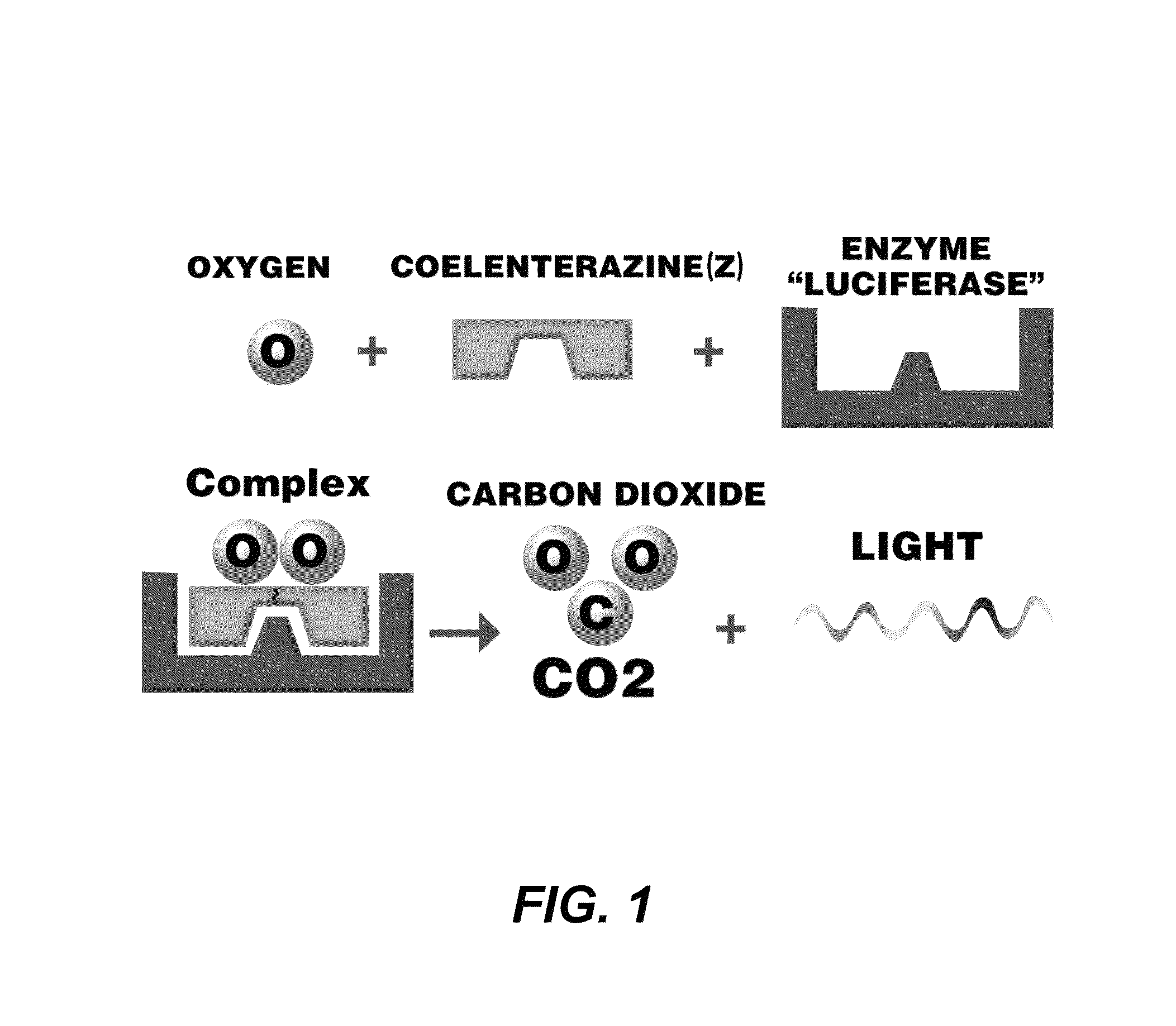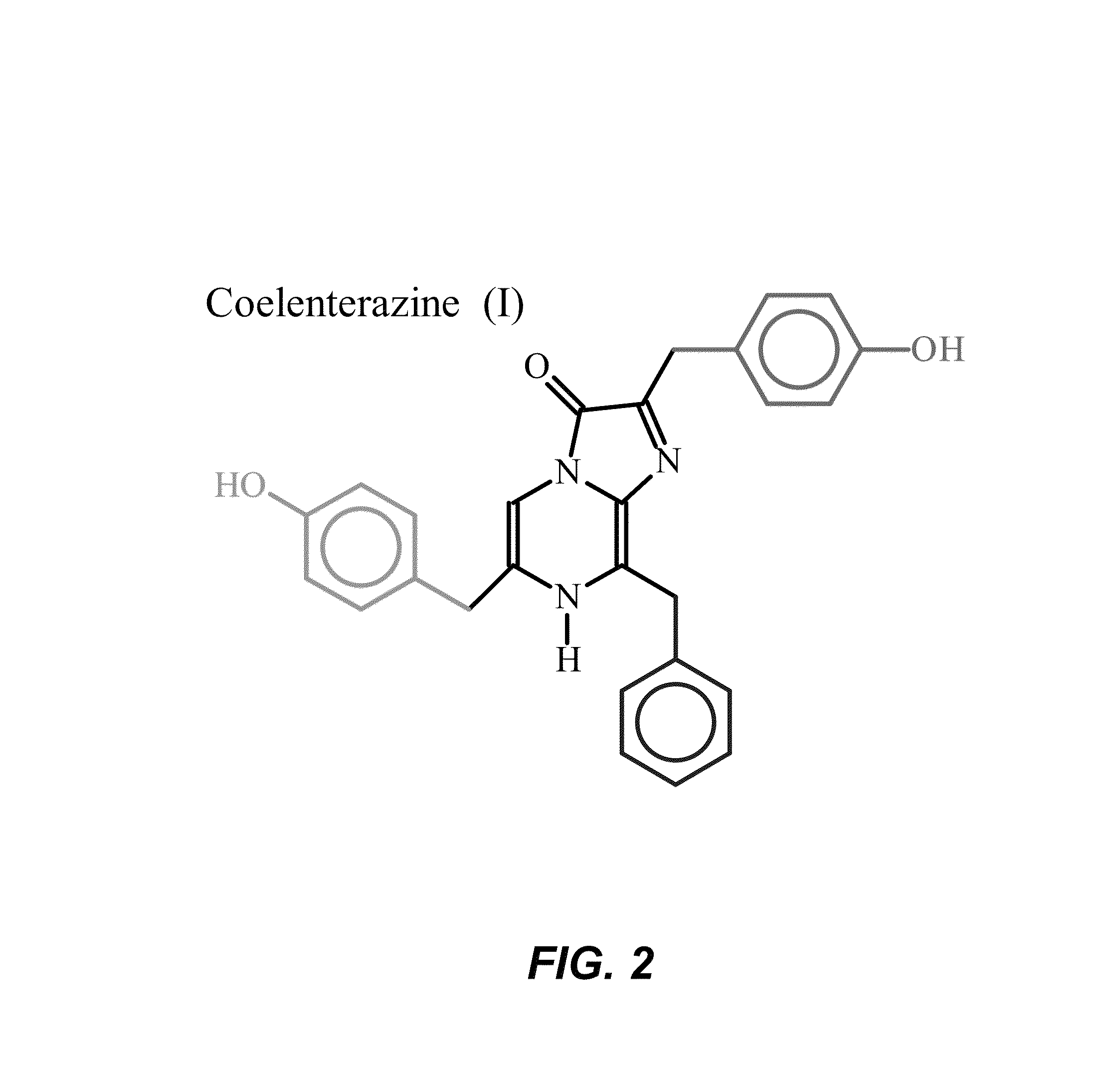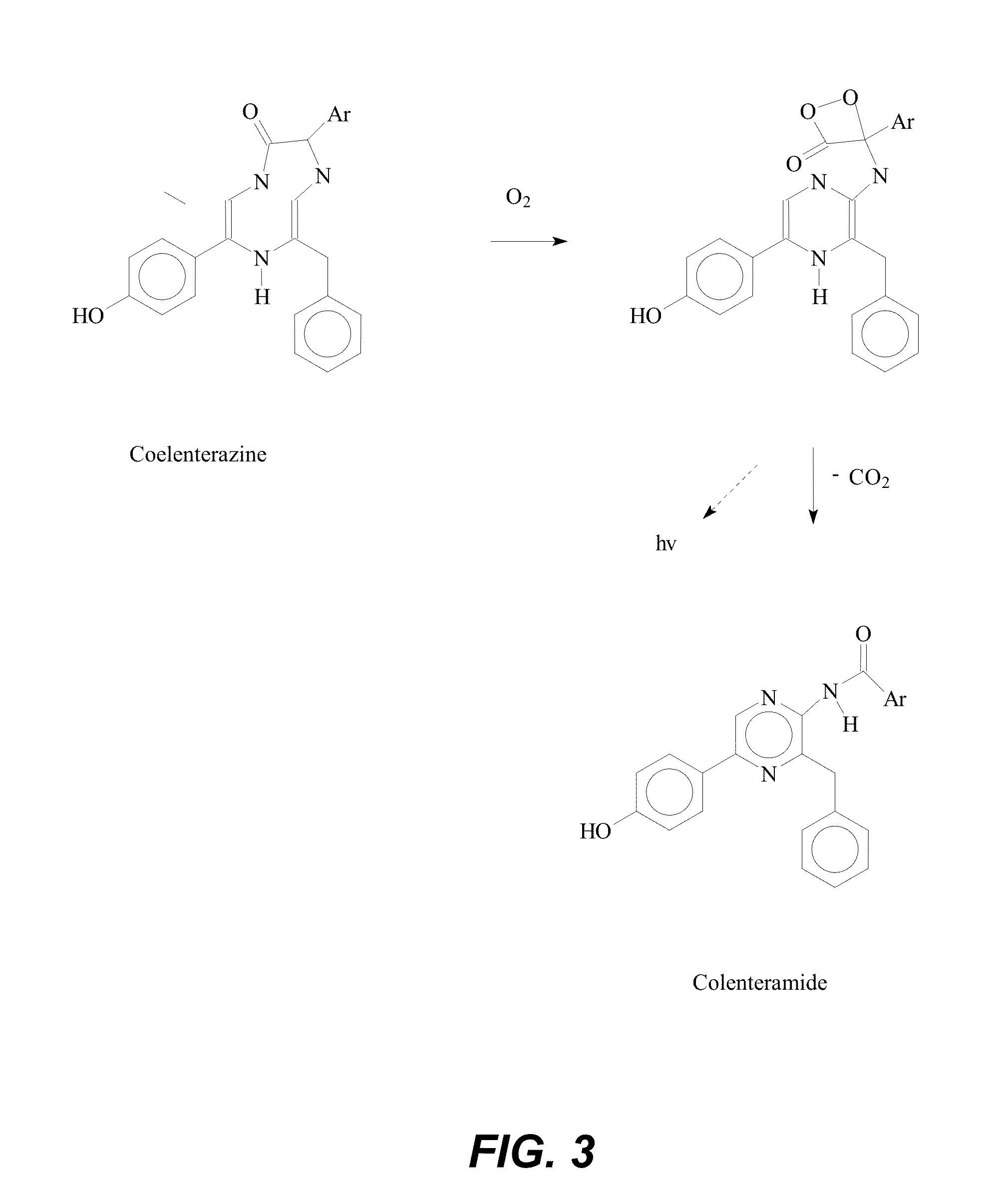Bioluminescent endoscopy methods and compounds
a bioluminescent and endoscopy technology, applied in the field of methods, can solve the problems of inability to see, damage to the ureter, and difficult observation of certain anatomical structures in conventional endoscopy under normal visible lighting conditions, and achieve the effects of preventing damage to these structures, facilitating detection of leakage or injury, and excellent instantaneous visualization
- Summary
- Abstract
- Description
- Claims
- Application Information
AI Technical Summary
Benefits of technology
Problems solved by technology
Method used
Image
Examples
example 1
[0211]A rat was equipped with bilateral jugular cannulas. To one was applied a solution of coelenterazine (50 mM) in Hank's balanced salt solution and to the opposite jugular cannula was administered Renilla luciferase, 5 mg / ml in Hank's balanced slat solution. An image was obtained and was pseudocoloured with Scion Image according to the light level obtained by a Princeton Instruments camera and is shown at FIG. 19.
example 2
[0212]A rat was equipped with bilateral jugular cannulas. To one was applied a solution of coelenterazine (50 mM) in Hank's balanced salt solution and to the opposite jugular cannula was administered Renilla luciferase, 5 mg / ml in Hank's balanced slat solution. An image was obtained and was pseudocoloured with Scion Image according to the light level obtained by a Princeton Instruments camera and is shown at FIG. 20. FIG. 20 illustrates patchy contrast regions in the liver:
example 3
[0213]A rat was equipped with bilateral jugular cannulas. To one was applied a solution of coelenterazine (50 mM) in Hank's balanced salt solution and to the opposite jugular cannula was administered Renilla luciferase, 5 mg / ml in Hank's balanced slat solution. An image was obtained and was pseudocoloured with Scion Image according to the light level obtained by a Princeton Instruments camera and is shown atFIG. 21. FIG. 21 perfusion of bioluminescence in the whole animal:
PUM
| Property | Measurement | Unit |
|---|---|---|
| concentration | aaaaa | aaaaa |
| concentration | aaaaa | aaaaa |
| concentration | aaaaa | aaaaa |
Abstract
Description
Claims
Application Information
 Login to View More
Login to View More - R&D
- Intellectual Property
- Life Sciences
- Materials
- Tech Scout
- Unparalleled Data Quality
- Higher Quality Content
- 60% Fewer Hallucinations
Browse by: Latest US Patents, China's latest patents, Technical Efficacy Thesaurus, Application Domain, Technology Topic, Popular Technical Reports.
© 2025 PatSnap. All rights reserved.Legal|Privacy policy|Modern Slavery Act Transparency Statement|Sitemap|About US| Contact US: help@patsnap.com



